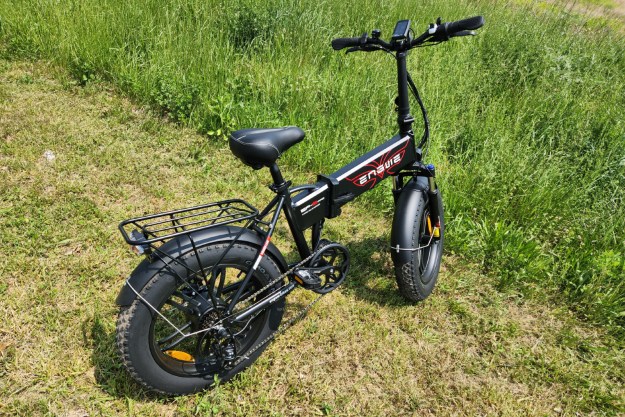Ever the innovator, the California-based clothing company Patagonia recently created and unveiled the first-ever line of neoprene-free wetsuits — setting a new industry standard in environmentally friendly apparel in the process. Neoprene’s been used in wetsuit production for more than six decades, involving a chemically-intensive, ecologically harmful process which many deemed a necessary evil. That is, until now.
Dubbed the Yulex, Patagonia’s natural rubber wetsuits are made from renewable sources and reduce CO2 emissions by 80 percent when compared to traditional methods. In other words, the trail Patagonia’s attempting to blaze isn’t one of a potential gimmick but something everyone in the surfing industry can easily get behind.
The conventional process
Typically, wetsuit manufacturers use foamed rubber that’s laminated on one or both sides with a fabric and when sealed, serves as an effective insulating body membrane. Traditional neoprene is made from polychloroprene rubber chips which are melted down and baked into sheets used for the interior. The process is energy-intensive and produces unavoidable petroleum by-products. Because of this, the use of non-renewable resources in wetsuit construction causes a detrimental environmental impact that companies have come to accept as commonplace practice.
The use of non-renewable resources in wetsuit construction causes a detrimental environmental impact
However, Patagonia wanted to find a better way and in 2006, began experimenting with renewable wetsuit resources. Two years later, it began a foray into the implementation of renewable natural rubber — a direction from which it never returned. The project began as a joint venture between Patagonia and a production company named Yulex who itself was recognized for its FSC certified, sustainable rubber harvesting methods.
“In 2008 Yulex came across something we had posted on our company blog, ‘The Cleanest Line,'” explained Patagonia’s wetsuit product developer, Hub Hubbard to Digital Trends. “It mentioned that there is no such thing as green neoprene. A lightbulb went off for them and they came to us with a little piece of foam the size of a Scrabble chip.”
A better way
The Hevea brasiliensis tree, also know as the rubber tree, is acclaimed for its production of milky latex, which is the primary source of natural rubber. Hevea trees can be harvested for latex throughout the duration of their lives, averaging 20 to 30 viable years. In Guatemala and Sri Lanka, harvesters on massive tree plantations perform a process known as rubber tapping which involves making daily incisions into the bark of individual trees. These incisions are slight and angular, slicing through the latex vessels of the tree without harming its growth and releasing the fresh flow of a milky white substance, which is drained out into a collection bucket at the base of the tree.

Patagonia utilizes latex sourced only from Forest Stewardship Council (FSC) certified plantations. The FSC’s mission is “to promote environmentally sound, socially beneficial, and economically prosperous management of the world’s forests,” as stated on its website. The Rainforest Alliance performs routine audits of its activities to ensure it upholds sustainability practices and conservation of these limited natural resources — and to prevent deforestation. Patagonia went one step further and decided to actually visit these plantations itself.
“We needed to go see them for ourselves. I didn’t really understand how important the FSC certification was when we started this project until I visited these plantations,” Hubbard added. “It is a very extensive process and we work very closely with the FSC and Rainforest Alliance. They have field auditors all over the world so it’s not necessary for us to constantly check in on them ourselves [anymore].”
Joining forces
While there are certification teams on the ground ensuring sustainable practices, Yulex’s purification process sets the green standard in the factory. Yulex optimally refines and purifies its natural rubber materials. Hubbard explained the process by saying, “[t]he natural latex is collected, coagulated, then pressed and washed with water until all of the impurities and proteins are removed. Yulex puts it through a final step to produce their Yulex Pure .”
The Yulex Pure Process removes over 99.9 percent of impurities in addition to improving the physical characteristics of the rubber itself, including elongation and strength. The most remarkable outcome? The performance of Yulex exceeds that of conventional neoprene. Patagonia implements rigorous testing both in the lab and out on the water to ensure this continues to remain the case.
“If I hadn’t told you our wetsuit wasn’t made from neoprene, you’d never know,”
“If I hadn’t told you our wetsuit wasn’t made from neoprene, or that it was made from a plant, you’d never know,” Hubbard continued. “Making a material that meets or exceeds the characteristics of neoprene was always the benchmark. We’ve done the extensive testing ourselves, by third-party labs, and outside wear testers, and Yulex performs just as well.”
Although it’s made the process as clean as possible, a small percentage of synthetic rubber is used in conjunction with the main constitution of purified natural rubber.
“We use 15 percent synthetic rubber. The rubber acts a stabilizer for the material, increases ozone and UV resistance, and meets our standards for stretch, strength, durability and recovery,” Hubbard admitted. While no product is perfect, Yulex wetsuits have come pretty close.
A higher standard
With the creation of the Yulex suit, Patagonia effectively set the bar for a higher standard throughout the wetsuit market. Its accomplishment challenges other companies to follow suit and, in fact, encourages them to do so. Hubbard stated, “We are now in our 5th-generation Yulex suit, we’ve gone neoprene-free, and have reduced our CO2 footprint on production by 80 percent.”
An astounding statistic by any measure, no doubt. Today, Patagonia utilizes FSC certified rubber into all 21 of its full wetsuits, proving yet again continues to follow through on the commitment to helping make the world a better place. Patagonia’s Yulex Wetsuit project truly illuminates the company’s mission statement to “build the best product, cause no unnecessary harm, [and] use business to inspire and implement solutions to the environmental crisis.”


